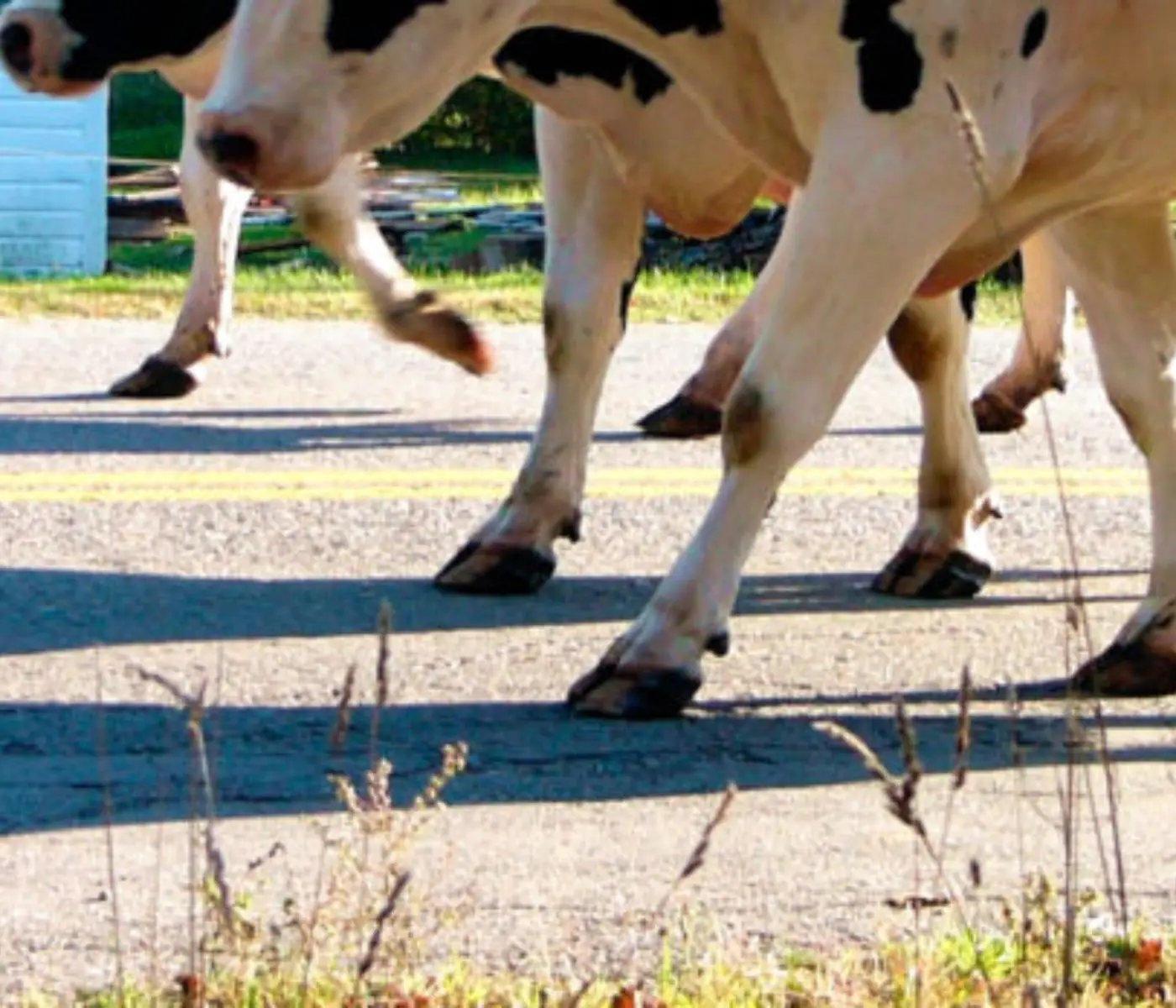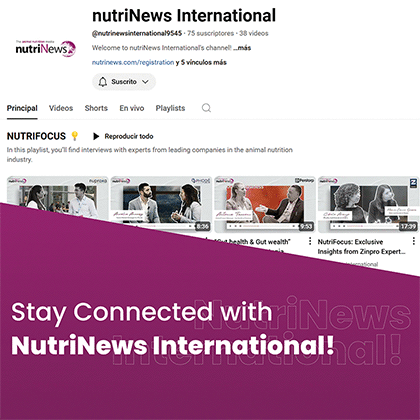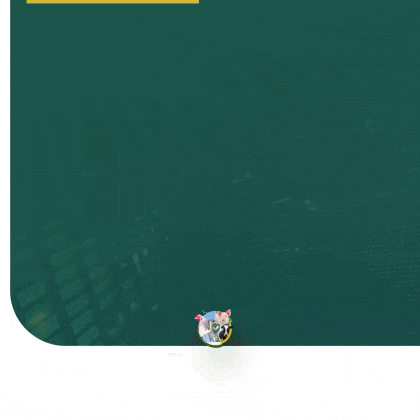Risk Factors in Hoof Health in Dairy Cows
Introduction
In recent years, livestock farming has undergone significant technological and productive changes. In the face of global economic processes, the only way forward is to be competitive. In our conditions here in La Laguna, Torreon, Mexico, intensifying production involves significant specific changes in animal welfare. This is a key aspect that does not correspond to just one aspect or particularity but to an entire team working in a stable.
The presence of lame cows would not be considered of major importance if the incidence were only occasional. The animal would be treated with more or less success, and that would be the end of it. However, the number of lame cows has marked a considerable percentage in some cases, qualifying it as one of the most prevalent and costly conditions.
Lameness in dairy cattle is one of the most common reasons why a large number of cows are prematurely sent to slaughter. Adding to this loss is reduced production, withdrawal of milk due to medication use in affected cows, and the cost of treatment, there is a direct economic impact.
With similar importance to mentioned above, and qualifying it as an indirect loss, poor reproductive development can be seen, as the conception rate in affected animals decreases, there is low dry matter intake, marked loss of body condition, and a possible relationship with the onset of another secondary disease such as mastitis. Therefore, economic losses occur as a result of the consequence rather than the “disease” itself.
The etiology of lameness is multifactorial, and although we generally divide lameness by metabolic, mechanical, and infectious origins, it means that there are various factors and combinations of them that, when reaching a critical point, trigger the disease. Therefore, the evaluation of the lesions present in the affected hoof, with a correct diagnosis, will mark two paths to follow: the first is the adequate treatment for a quick recovery, and the other, perhaps more important, is the data collection that can indicate where we should start to prevent, which is much cheaper. Here lies the importance of having stable staff trained to carry out this work.
Feeding and its influence on lameness
Nutrition is one of the most important factors that can play a determining role in lameness problems in dairy cows. There is much discussion about the relationship between nutrition and lameness concerning the level of functional or effective fiber, the amount of fiber, the amount of grain, degrees of grain fermentation, the forage-to-grain ratio in the dairy cow’s ration, and subsequent acidosis. The amount of research examining the effect of nutrition on the hoof is limited. This can be partially attributed to both the time commitment required to see the effect of a change in nutritional programs on lameness incidents and the lack of adequate knowledge of the hoof by researchers. However, it is very evident that certain feeding regimes, diets, metabolic disturbances, and infectious diseases result in significant and prolonged drops in rumen pH, leading to a dramatic increase in lameness. Dr. Nocek summarized these damages in a diagram with the cascade of events that frequently lead to ruminal and metabolic conditions resulting in dairy cow lameness.
The key factors in this cascade are feed management, molds/mycotoxins (feed/forage quality), infectious diseases, and the management of metabolic disorders, environmental impact, and genetics. Many of these variables lead to ruminal disturbances resulting in the death of gram-negative bacteria and the production of endotoxins, leading to a vaso-constriction/dilation response within the hoof. This disturbance in blood and nutrient flow results in the production of poor-quality horn tissue and, if severe enough, the death of laminar horn tissue and acute lameness.
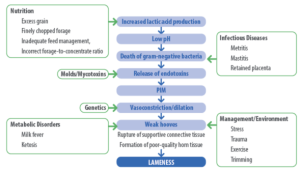
Image 1: Ruminal disturbances resulting in the death of gram-negative bacteria and the production of endotoxins, leading to a vaso-constriction/dilation response within the hoof causing lameness
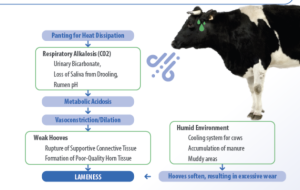
Image 2: Potential impact of heat stress on hoof integrity and lameness
Effect of vitamins and minerals on the hoof
Vitamins play important roles in maintaining hoof integrity. Generally, cows in Mexico are supplemented with vitamins A and E to ensure an adequate supply of carotenoids and tocopherol, both of which are important in maintaining skin integrity and immunity. Additionally, vitamin D is supplemented to maintain calcium metabolism.
In the past, B vitamins were generally not administered to mature ruminants. However, recent research indicates that rumen microbes involved in biotin synthesis are sensitive to low pH. Therefore, cattle fed high-grain diets or high-quality pastures may develop subclinical biotin deficiencies. Biotin is a water-soluble vitamin essential for the formation and integrity of keratinized tissues such as skin and horn tissue. Its role in the formation and integrity of keratinized tissues is related to its role in the differentiation and keratinization of epidermal tissues that produce hoof horn and skin. Biotin reserves drop dramatically during periods of stress and lameness, resulting in reduced keratinization and production of the intercellular cement substance of the hoof horn. The horn tissue produced during a biotin deficiency would be soft and weak.
Results indicate that the biotin status of cattle appears to be marginal, as evidenced by the improvement in hoof integrity in response to supplementary biotin. Administering 10 to 20 mg/head/day of supplementary biotin will result in a reduction of hoof disorders such as white line separation, sole ulcers, sole hemorrhages, and fissures.
Relationship between trace minerals and hoof integrity
An area of nutrition that is commonly overlooked is the role of trace minerals in improving hoof health, structural integrity, and reducing the incidence of lameness.
Iodine: Iodine is required for the synthesis of the thyroid hormone thyroxine, which regulates the degree of metabolism. Signs of subclinical iodine deficiency include increased occurrences of hoof disease and respiratory illnesses.
Several studies have shown the benefits of administering iodine in the form of ethylenediamine dihydroiodide (EDDI) above the nutritional requirement to prevent hoof disease. When cattle were intradermally inoculated in the interdigital space with a mix of Fusobacterium necrophorum and Bacteroides melaninogenicus to induce acute hoof disease, cattle receiving 12.5-200 mg/animal/day of EDDI had less lameness compared to control cattle.
The recommended iodine content in the diet for lactating dairy cattle ranges from 0.3 to 0.9 ppm, depending on the stage of the lifecycle and dry matter intake (NRC, 2001).
Soybean and canola increase the animal’s iodine requirement as they contain goitrogenic compounds that reduce iodine availability. Additionally, high levels of nitrate in the diet inhibit iodine uptake by the animal. Therefore, producers with nitrate-rich forage and/or water need to assess whether iodine supplementation levels are adequate.
Selenium: Before 1957, the nutritional significance of selenium was related to its toxicity. Nowadays, selenium is recognized as an essential element that defends the body against oxidative stress. The selenium-containing enzyme glutathione peroxidase prevents the formation of free radicals that cause cellular damage. Symptoms of selenium deficiency include immune suppression, reduced fertility, and weak or silent heats. Symptoms of chronic selenium toxicity include lameness, inflamed and deformed hooves, and loss of tail hair. In pregnant animals, selenium toxicity can lead to abortions, stillbirths, and weak, lethargic calves because selenium accumulates in the fetus at the expense of the cow.
Placental retention, metritis, and mastitis have been reported to predispose cattle to hoof problems. Administering vitamin E and selenium has long been associated with reducing the incidence of retained placentas and uterine infections. However, dairy producers need to be aware that over-supplementation of selenium can increase the incidence of lameness.
The selenium requirement is 0.33 ppm. Calcium, copper, zinc, and sulfur reduce selenium absorption.
Zinc: Zinc is an essential component of various enzyme systems. Metabolic actions of these systems include carbohydrate and energy metabolism, protein synthesis, nucleic acid metabolism, epithelial tissue integrity, cell repair and division, and transport and utilization of vitamin A. Additionally, zinc plays a crucial role in the immune system and certain reproductive hormones.
It is theorized that zinc enhances hoof integrity by accelerating wound healing, increasing epithelial tissue repair rate, and maintaining cellular integrity. Zinc is also required for the synthesis and maturation of keratin.
In dairy barns with a high incidence of hoof problems, cows fed 2 to 3 g/day of zinc sulfate for 70 days experienced fewer hoof issues compared to cows not receiving zinc supplementation. The lack of consistent response to inorganic zinc feeding can be attributed to antagonists present in the diet reducing the bioavailability of inorganic zinc. Zinc sources in the form of complexes, such as zinc methionine, have proven to be more bioavailable than zinc from inorganic sources, as they are less affected by diet-related antagonists.
Several studies have shown that zinc complexes improve hoof integrity. Cows receiving zinc complexes had fewer cases of heel fissures, ulcers, white line lesions, and interdigital dermatitis compared to cows not receiving zinc complexes. Additionally, the incidence of plantar ulcers and white line disease tended to decrease.
Copper: Another event that occurs during the prepartum period, which can affect hoof integrity, is the maternal transfer of copper to the developing fetus. Copper status is lower in late gestation and early lactation, making cows more prone to copper deficiency during this period. The question is: do reduced maternal copper reserves result in the formation of less tightly bound connective tissue, resulting in greater tissue elasticity?
The required copper content in the diet for dairy cattle is 10 ppm, depending on the stage of the lifecycle and milk production level. It should be noted that copper requirements assume normal levels of stress and antagonists. Copper availability is greatly reduced by sulfur and molybdenum, as they form insoluble complexes that provide unavailable copper to the animal. Zinc and iron also reduce copper availability for the animal. The requirements for zinc and copper illustrate the importance of trace mineral supplementation in late gestation and early lactation. Moreover, if zinc and copper requirements, along with other trace minerals, are not met, dairy cattle would be predisposed to increased lameness in early lactation.
Effect of the relative day to parturition on the copper status of dairy cattle as measured by liver copper concentration.
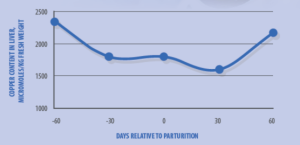
Manganese: Manganese plays a role in various enzyme systems and is required for cartilage and collagen formation, as well as bone growth. Additionally, it plays an important role in reproduction. Animals suffering from clinical manganese deficiencies will exhibit skeletal abnormalities, twisted legs, and shortened tendons as noted on the legs. Manganese helps minimize hoof problems by maintaining proper hoof formation.
The required manganese content in the diet for dairy cattle ranges between 60 and 75 ppm, depending on the stage of the lifecycle and milk production level. Similar to zinc and copper, the manganese requirement, on a DM basis in ppm, is higher for lactating cows in early lactation.
Manganese requirements should be increased for stressed cattle and those consuming diets high in copper, cadmium, calcium, iron, potassium, phosphorus, cobalt, and magnesium. Dairy producers may also consider manganese supplementation in late gestation as a cow’s manganese status is at its lowest.
Cobalt: The primary physiological role of cobalt is as a component of vitamin B12 (cyanocobalamin). Vitamin B12 sources in the diet are not efficiently used by ruminants due to inactivation by ruminal microbes. Sufficient cobalt administration enables adequate synthesis of vitamin B12 in the rumen. Vitamin B12 is necessary for propionate metabolism, one of the volatile fatty acids. A deficiency in vitamin B12 affects protein and energy metabolism, resulting in laminitis.
The recommended cobalt content in the diet for lactating dairy cattle is 0.11 ppm. Research indicates that fiber digestion must be increased when dietary cobalt levels are raised to 0.25 to 0.35 ppm. Manganese, zinc, iodine, and monensin can reduce cobalt availability.
Chromium: Chromium enhances insulin action, resulting in increased glucose and amino acid uptake by cells in the body. Signs of chromium deficiency include reduced growth rate, reduced feed efficiency, and reduced immune function. Chromium deficiency in lactating cows can lead to increased incidences of ketosis and decreased milk production. A reduction in nutrient availability can lead to inferior production of horny tissue in the hoof, resulting in lameness. Therefore, chromium supplementation can help reduce lameness in early lactating cows by improving nutrient uptake when nutrients tend to be limited.
Effect of administering a combination of trace mineral complexes on hoof health
Trace minerals, in addition to zinc, play important roles in maintaining hoof integrity. Therefore, it is not surprising that administering a combination of zinc, manganese, copper, and cobalt complexes results in a subsequent reduction in hoof disorders when compared to administering only inorganic trace minerals. The results indicated that administering a combination of zinc, manganese, copper, and cobalt complexes, rather than just zinc complexes or only inorganic trace minerals, reduced the incidence of:
- double soles (4.0 vs. 9.8%),
- white line separation (28.9 vs. 43.9%),
- sole hemorrhages (64.1 vs. 72.5%), and finally,
- sole ulcers (13.2 vs. 14.8%).
- digital dermatitis (8.3 vs. 12.4%) and
- tended to reduce the incidence of dorsal wall cracks (10.4 vs. 11.7%).
Effects of feed management on the hoof
Feed management is as important as the ration itself; improper diet management will greatly contribute to having hooves lacking the necessary resistance.
In addition to ensuring that cows consume diets with adequate amounts of effective fiber and acceptable amounts of NFC, dairy producers need to implement management practices that minimize “junk” feeding, especially in early lactation.
CONCLUSIONS
Locomotion scoring can serve as an early warning system for potential hoof disorders. Animals should be scored and identified as candidates for corrective trimming on a routine basis, such as at calving, reproduction, drying off, selection, and daily milking. Early identification, corrective trimming, attention to cow comfort, non-slip flooring, and ensuring adequate nutrition, including trace mineral complexes, can improve overall hoof health and positively impact performance and profitability.
Meeting the true requirements that dairy cows need involves not only understanding the animal’s requirements but also the factors that will affect the amount of trace minerals needed in the diet to meet those requirements. Administering research-proven organic trace minerals is a good way to minimize the risk of animals developing trace mineral deficiencies that compromise hoof integrity and can lead to lameness. Prompt identification of any movement abnormality in each animal gives us a greater opportunity for correction regardless of the origin of the hoof problem.
References upon request
